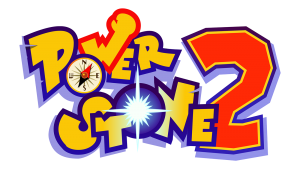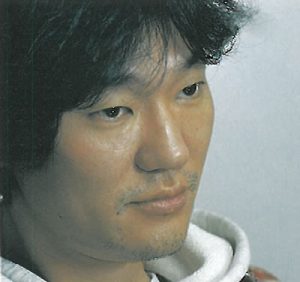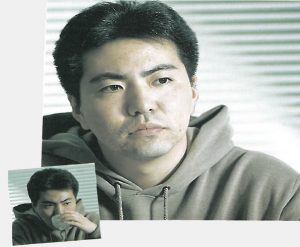These two interviews were printed in the August 2000 issue of the Spanish game publication DC Magazine. Both discuss two of Capcom’s most notable Dreamcast releases, Power Stone 2 and Resident Evil Code: Veronica and focus on the console’s online potential for gameplay.

Noritaka Funamizu was a part-time writer for Beep! magazine when he was invited to Capcom. The visit turned into a job in 1985, and Funamizu embarked on an incredible career. Among his credits are classics like Gun.Smoke, Side Arms, Forgotten Worlds, and Super Street Fighter II. He was eventually promoted to General Manager of Capcom’s Production Studio 1, where among several memorable titles, he was the General Producer for the Power Stone games.
DC Magazine: The new characters seem to try and appeal to the teenage public.
Noritaka Funamizu: Well, that was not our intention. It must be recognized that the world of Power Stone has an element of childhood fantasy – the violence is rather humorous, nobody bleeds or dies. The new characters are designed to fit into this world.
DC Magazine: Was it technically difficult to implement four players fighting at the same time on the same screen?
 Noritaka Funamizu: Yes, it was very difficult. The arcade version was a bit confusing; sometimes you lost sight of your character and the perspective did not convince us at all. In the DC version, we have solved this problem by moving the camera closer to the fighters.
Noritaka Funamizu: Yes, it was very difficult. The arcade version was a bit confusing; sometimes you lost sight of your character and the perspective did not convince us at all. In the DC version, we have solved this problem by moving the camera closer to the fighters.
DC Magazine: What kind of comments have you received about the arcade version?
Noritaka Funamizu: People take it for what it is: not a face-to-face beat-’em-up with the level of seriousness of Street Fighter 3, but a four-man party in which everyone trade blows at the same time.
DC Magazine: In the original, you could get new items and mini games if you beat the single-player mode with high scores. Does the same thing happen in Power Stone 2?
Noritaka Funamizu: In the DC version, you collect coins which you can then use to buy all kinds of weapons and items. Moreover, you can combine them and make objects with them to your liking. Thanks to the VMU, you can store and download them in the arcade.
DC Magazine: Was the idea of connectivity between the Dreamcast and arcade versions through the VMU Sega or Capcom’s idea?
Noritaka Funamizu: It was Capcom’s. We offered it to Sega and they loved it. Have you heard of a Sega wrestling game called Giant Gram? Well, it’s based on an identical idea we had, only Sega jumped on it.
DC Magazine: Do you mean they are stealing ideas?
Noritaka Funamizu: [Laughs]. No, it was mere coincidence.
DC Magazine: Have you started talking about Power Stone 3?
Noritaka Funamizu: I don’t know what our next project will be, but if it’s up to me I’d love to make more four-player titles.
* * *

Hiroki Katoh began his career at Capcom with the original Resident Evil, where he was responsible for system planning and camera work. He remained with the series through its different installments and was the director for its only Dreamcast installment, Code: Veronica.
In our most recent trip to Capcom’s Japanese HQ, we got an exclusive interview with the producer of Code: Veronica, Hiroki Katoh.
 DC Magazine: What were your main objectives while developing Code: Veronica?
DC Magazine: What were your main objectives while developing Code: Veronica?
Hiroki Katoh: We had two new goals that we wanted to achieve. First, we wanted to incorporate a free-roaming camera and second, to achieve detailed and realistic facial animation.
DC Magazine: What served as inspiration for the new monsters?
Hiroki Katoh: We had a lot of meetings where we racked our brains, and people made suggestions and asked: “Hey, how about a monster with this type of attack?” Then the artist commissioned the script to make some drawings around the idea, and as soon as he had them we met again and started from there. It’s a very effective system, and most of our ideas come from there, rather than from the movies.
DC Magazine: Many people comment on the cinematic effects of the Resident Evil games and compare them to movies like Night of the Living Dead. Was Code: Veronica inspired by any particular movie?
Hiroki Katoh: The influence of the action and camera angles of The Matrix and John Woo movies can be clearly seen in our introduction, but other than that we didn’t draw from any other movies.
DC Magazine: Do the Resident Evil games still impress you?
Hiroki Katoh: After developing the series for five years, the games no longer scare me. All my efforts are centered on scaring the player.
DC Magazine: Will there one day be a Resident Evil game that can be played online?
Hiroki Katoh: It is an idea that has been considered for a long time, and when the network is ready and there are enough people connected, it is very possible that the project will be developed.
 DC Magazine: What has the response to Code: Veronica been like in Japan?
DC Magazine: What has the response to Code: Veronica been like in Japan?
Hiroki Katoh: We have received opinions of all kinds. Some are impressed by the introduction, others like the new puzzles and some are delighted with the return of Wesker.
DC Magazine: What did you create first in Code: Veronica, the plot or the environments?
Hiroki Katoh: In fact, it was simultaneous. We met with the story creator and discussed locations that could be cool. He wrote plot around these locations.
DC Magazine: Is there still a lot of Resident Evil ahead?
Hiroki Katoh: The new game in the series will develop a completely new branch of the story. Naturally, it will continue to be called Biohazard (Resident Evil in the West), and it will be linked to the main plot, but it will bring into play a new line of characters, though that is still to be confirmed.

Recent Comments